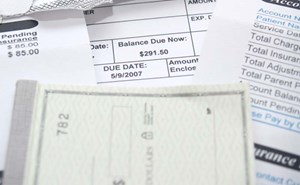As you all know, the important consumer protections instituted by the No Surprises Act went into effect on January 1. I have written numerous blog posts about the major policy issues that have resulted from this Administration’s flawed implementation of the law—and all of ACEP’s advocacy efforts over the last year since the law was enacted. However, while it's important to understand these policy issues, it’s probably even more critical that you and all your emergency physician colleagues understand what you are actually required to do to comply with the law and how the new federal process for resolving payment disputes for out-of-network (OON) services works.
Therefore, in addition to ACEP’s No Surprises Act advocacy webpage, I’m happy to announce that this week, we launched a separate webpage that lays out at a high-level what exactly you need to know about the law.
I don’t want to spoil all the “fun” you will have exploring our new webpage, but overall, it provides information on the following areas:
Basic Understanding of the Ban on Balance Billing
The No Surprises Act bans balance billing for OON emergency care and certain non-emergency care and limits patient cost sharing to patients’ in-network cost-sharing amounts. In a nutshell, this means that you as an emergency physician cannot collect more from patients for OON care than you would have collected if such service was in-network.
How Emergency Physicians Will Get Paid for an OON Emergency Service.
The webpage includes a helpful schematic of how the ultimate payment for OON emergency services will be determined. Generally, payment resolution follows these steps:
- You provide the emergency service.
- You bill the health plan for such service.
- The health plan must respond to you with a reasonable initial payment (or denial of payment) within 30 business days. There is no specific requirement on how much this initial payment must be.
- You send the bill to patient. The patient pays their in-network cost-sharing obligation, which is based off the median in-network amount for the service (called the Qualified Payment Amount, or QPA).
- If you disagree with the initial payment, you can try to negotiate with the health plan for 30 business days.
- If you cannot agree to a payment amount after the negotiation period ends, an independent arbiter will pick the final amount through the “independent dispute resolution” (IDR) process.
How the IDR process works
The webpage then lays out a step-by-step graphic of how the IDR process works once you get to that stage. At a high-level:
- You and the health plan need to select an independent arbiter from a list of approved ones (the federal government will pick one on your behalf if you can’t agree to one).
- Then, you and the health plan have 10 business days to submit an offer for what you each think the total payment for the OON service should be. You and the health plan also have to pay certain fees at this time to enter into the IDR process: a non-refundable administrative fee of $50 that covers the federal government’s cost of administering the process and another fee of between $200 to $500 (between $268 and $670 for “batched” claims) that goes to the arbiter. As discussed in the last step of this process, the second fee is refunded to the winner of the dispute.
- The arbiter has up to 30 business days from when the arbiter was first selected to choose either your offer or the health plan’s offer. The arbiter must apply certain factors to come to this decision—and as many of you know—this is where we believe the federal government really tilted the scales towards health plans. The arbiter is instructed to assume that the QPA is the presumptive payment amount for OON services, and since the QPA is an artificially low amount that is solely calculated by health plans, this presumption puts you at a significant disadvantage during the IDR process.
- Once the final amount is select, the loser must make the other side whole within 30 calendar days. The winner is also refunded the arbiter fee within 30 business days.
States with their Own Balance Billing Laws
In general, the No Surprises Act defers to states that already have their own laws in place for determining payment rates for OON services. If the state law applies, the federal process for resolving disputes, including the IDR process, is NOT used. However, it’s not as simple as thinking “well, my state has a OON law, therefore it applies in all cases and the federal process doesn’t.” Health care laws are never that simple! There are a number of factors that you have to look at to make that determination, including whether your state law applies to the specific health plan, provider-type, or service involved. For example, self-funded plans, called ERISA plans, usually aren’t regulated by states and would fall under the federal law regardless of whether the state has a law in place. However, some states allow ERISA plans to opt-in to the state law. All in all, it gets complicated very fast, and our webpage includes a step-by-step process for determining whether or not a specific service you provide would fall under the state law or federal law.
State or Federal Enforcement of the No Surprises Act
On a related note, it is important to understand what entity is actually enforcing the No Surprises Act requirements: the federal government or individual states. The Centers for Medicare & Medicaid Services (CMS), one of the main federal agencies responsible for implementing the No Surprises Act, has sent letters to individual states outlining which provisions of the law the federal government will enforce and which provisions the individual state will enforce. Specifically, each letter indicates whether:
- The federal or state government will be enforcing the law or whether they will be sharing that responsibility.
- The federal or state external review process for addressing adverse determinations related to the surprise billing protections will apply.
- The federal IDR process will apply or whether the state has its own surprise billing law in place that overrides the federal IDR process.
- The federal provider/patient dispute resolution process for uninsured individuals will apply or whether the state can use its own process for resolving provider/patient disputes.
ACEP has created a spreadsheet, embedded in the webpage, which links to all the letters and answers each of these four major points. CMS hasn’t written letters to every state yet, so we will update the spreadsheet periodically as these letters are sent out.
Disclosure Requirements
You and the facility where you work are required to inform all your patients about the new patient protections under the No Surprises Act in three different ways:
- Prominently at the location of the facility;
- As a fact sheet provided to the patient either in person, by mail, OR by email—the fact sheet can be created using a template (see last page at link) provided by CMS; and,
- On a public website
For emergency care, your hospital can take responsibility for the first two requirements if you have a written agreement in place for this. It is recommended that the sheet be provided to the patient at the place and time of care. If your hospital does not take on this responsibility, then you must provide the disclosure fact sheet to the patient at or before you collect any cost-sharing payment from them, or at least before you file a claim with the patient’s health plan. Your group is responsible for the third requirement—i.e., the disclosure notice must be posted on your group’s website, if your group has one.
Good Faith Estimates
The No Surprises Act requires clinicians providing non-emergency care to provide good faith estimates of services when care is scheduled at least 72 hours in advance or upon request from individuals who are uninsured or self-pay. An extremely common question I have received is whether emergency physicians have to provide good faith estimates for emergency care. ACEP has confirmed with CMS that you do NOT need to issue a good faith estimate for emergency care.
Well, maybe I did spoil some of the “fun” you will have exploring our new webpage, but I still highly recommend that you check it out. Also, please send the link to the webpage around to all your emergency physician colleagues who may be less familiar with the No Surprises Act requirements. Again, it is critically important that everyone, even those who aren’t avid readers of Regs and Eggs, understand them.
Until next week, this is Jeffrey saying, enjoy reading regs with your eggs.






